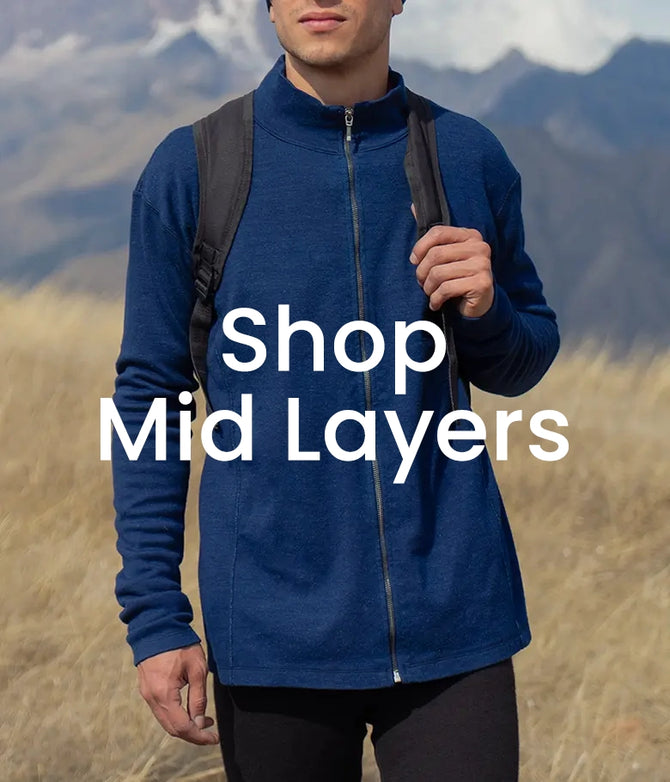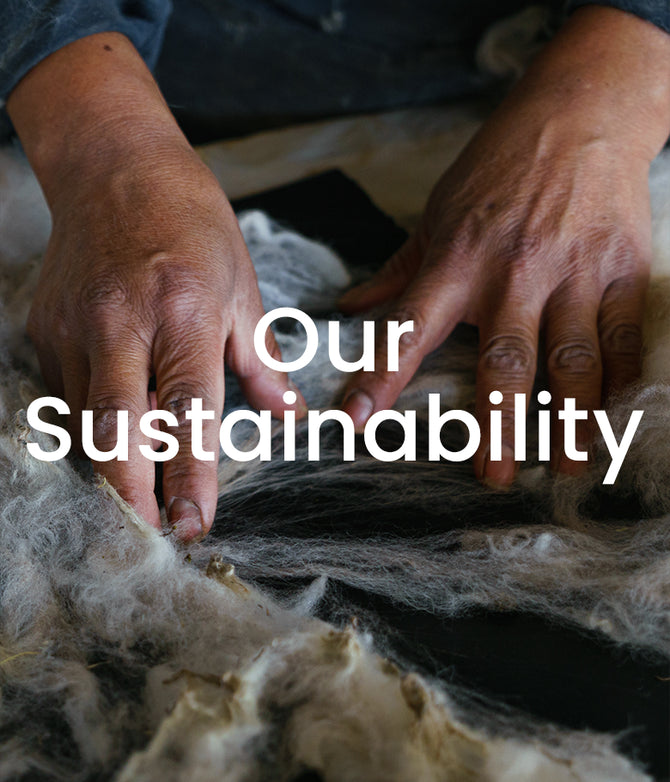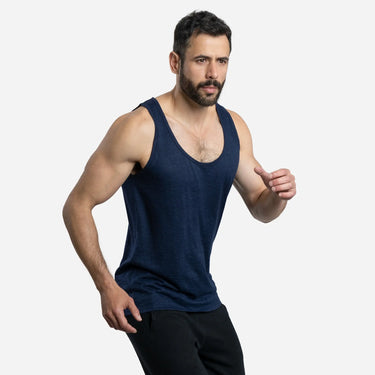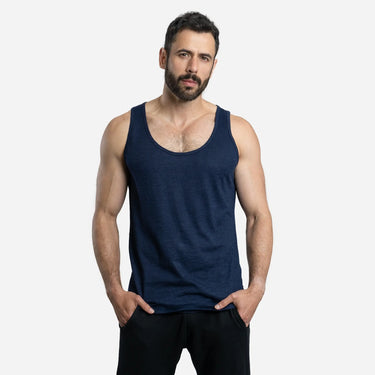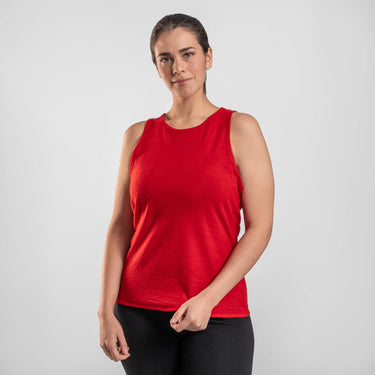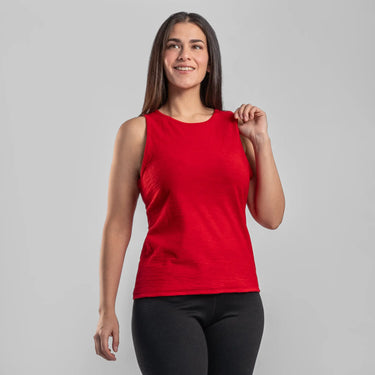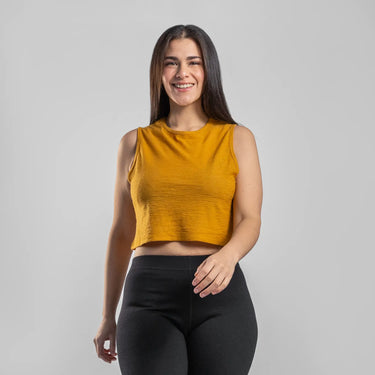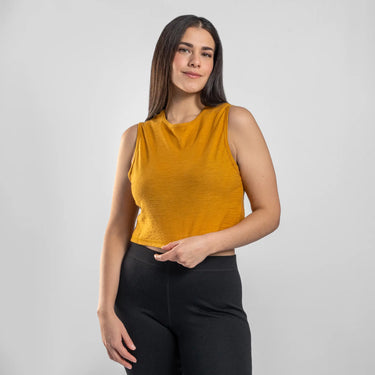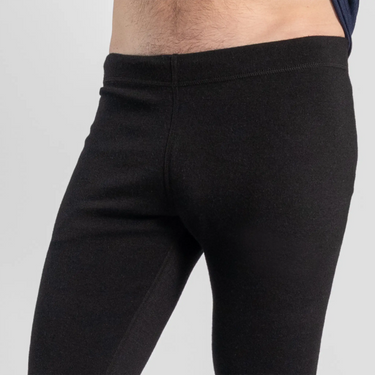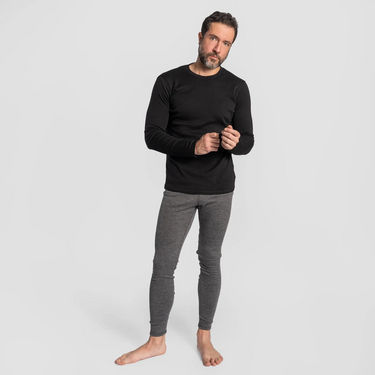IN SEARCH OF THE PERFECT BASE LAYER
Published Dec 19, 2018 | Updated Dec 31, 2024
Reading time: 5 minutes
If you’re thinking about trekking to Machu Picchu, hiking the Appalachian Trail, or skiing in the Alps, it's important to have all the necessary gear in mind, and with that, what you're going to wear is vital. And base layers are where it all starts.
In this article, we look at what base layers are and why you should consider alpaca wool for your next layer, especially now that the ski season in the Northern Hemisphere has begun.
What Is A Base Layer?
A base layer is the first layer of clothing next to your skin. Traditionally, a base layer for the top half of the body would be a purpose—made undershirt or tank top, that people would generally only wear under other clothing. But what a base layer top looks like has been changing with fashion, research and technology.
The main function of base layers is to absorb sweat from the skin—called transplanar wicking—and to be able to distribute it evenly or in any case in a way that does not cause discomfort to the user—called in-plane wicking—, improving the evaporation of this fluid, reducing the time of moisture retention in the garment, and therefore, its drying time [1,2,3]. This property is known as Breathability.
Synthetic materials do not perform as moisture—wicking layers, unlike most organic fibres, particularly wools [2,3]. While base layers should add some warmth to your layering system, their primary function is to wick sweat, and transplanar wicking helps with this function, but it is imperative to remember that this breathability is also detrimental if the outer layers are not of quality [1], as the thickness or type of fiber can be counterproductive.

What types of base layers can we find?
Fashion is constantly changing, and today base layers are worn as outer shirts as well as undershirts, so there is more attention to style and color in the market. Most people don't wear base layers on their legs for everyday life, but they become essential during winter activities such as skiing, snowboarding, and hiking in cold weather. See more about base layer styles below.
Styles of Base Layer
T-Shirt
The most basic type of base layer is a shirt-type garment, which could have short or long sleeves or be a tank top. These base layers tend to be relatively thin and quite lightweight. They can be used on their own in the summer, or as the first layer for cold or variable temperatures (where you start an activity cold but get hot later, for example).

Sweater
Many base layers these days have features like quarter- or half-length zippers, hoods & thumb-loops. This means they look more like sweaters, but are still made of thin enough fabric that you can wear them next to your skin. They are perfect for wearing on their own when exercising in cool weather, or under insulating layers for real cold.

Leggings / Tights
Because base layers need to fit snugly, options for your bottom half are most likely to be leggings/tights. Often known as “long johns” or “thermal underwear”, lower half base layers are usually designed to be worn under other clothing or as sleepwear for cold weather camping. Increasingly, some look good enough to be used on their own too.

What Materials Are Base Layers Made From?
Technical base layers need to be made from a breathable fabric, so no outdoor company worth its salt will market a cotton garment as a base layer. There are quite a few options out there these days, including bamboo viscose and silk, but the most common base layer materials are synthetics and wool.
Synthetics
Synthetic base layers are typically made from polyester or polypropylene, which are polymers derived from petroleum byproducts—including recycled plastics. Polypropylene is more breathable, dries faster, and is a better insulator when wet than polyester. But synthetic fibers tend to have lower breathability than organic fibers [1]. And while this property is correlated to the thickness of the fibers [1,2,3,4], no matter how thin the synthetic base layers are, the same thickness of organic wool will result in the same result [4].
At Arms of Andes we use the finest Royal Alpaca Wool sourced in the Peruvian Andes. The Andean alpacas naturally developed over thousands of years in harsh conditions in high altitudes, creating the perfect fiber for outdoor gear that helps you stay protected in all conditions.
Discover our outdoor apparel.

Merino Wool
Over the past 20 years, merino wool has become the gold standard for lightweight, breathable natural fabrics. Finer than other sheep wools, merino wool is soft and absorbs moisture well [2,3]. The wool's structure and transplanar wicking mean it can also have a cooling effect when temperatures rise[1,2,3]. In addition, merino wool does not emit unpleasant odours over long work days, compared to work ranges for synthetic fibres. On the other hand, merino wool is not very durable, and technological advances are creating garments combined with nylon or spandex that improve breathability and flexibility, but the length of drying time remains an unmet challenge [4].
Alpaca Wool
The new kid on the block for outdoor clothing, very few companies use alpaca wool for technical garments or base layers, and those that do often blend it with other fibers. Arms of Andes makes the only 100% royal alpaca wool base layers—as well as mid layers and underwear—on the market. But why? Alpaca wool has a similar structure to merino, but it has a hidden characteristic—partial medulation [8]—, which means that alpaca wool does everything merino does, but better! This partial medulation refers to the fact that there are pores in the fiber spine that allow optimal aeration like merino, and as it is to a lesser extent [4], it makes it more durable. Alpaca wool is considered hypoallergenic [5,6,7], as it is not coated with lanolin [8]—or only in small amounts. Therefore, it does not generate odors [1,2,3], it retains heat [1,4,5], and what makes a big difference—along with merino wool—compared to synthetic fibers is the psychological factor [1]. The fineness of natural fibers, even when wet or exposed to extreme temperatures, generate greater comfort to the touch and dermal sensitivity than synthetic garments [1,5,6,7].
At Arms of Andes we make our gear from 100% Royal Alpaca Wool of 18-18.5 microns.
If all that doesn’t convince you, Peruvian alpaca wool is sustainably produced by small-scale alpaca herders, in the animal’s natural habitat. Arms of Andes is now using natural dyes and cotton to stitch together the garments, and produces all in one country (Peru), which reduces our overall environmental impact.
Arms of Andes offers a complete range of technical clothing made from alpaca wool, starting with underwear, moving on to base layers and mid layers, topped of with accessories: socks, beanies and neck gaiters. The superior properties of alpaca wool developed naturally, through thousands of years of exposure to the elements and harsh conditions of the Andes Mountains, making it the perfect fiber for outdoor use.
Why use synthetics if nature already does it better?


Glossarykeywords
Breathability:
The ability of a material to allow air circulation, ensuring comfort and freshness.
Hypoallergenic:
Characteristic of certain materials that reduces the risk of contracting allergies.
Lanolin:
It is a natural wax that comes from the skin of sheep and rams.
Odor Resistance:
The ability of a material to prevent the growth of bacteria that cause unpleasant odors.
Partial medulation:
Technical term describing partially hollow fibers, which contribute to their lightness and thermal insulation.
At Arms of Andes we use the finest Royal Alpaca Wool sourced in the Peruvian Andes. The Andean alpacas naturally developed over thousands of years in harsh conditions in high altitudes, creating the perfect fiber for outdoor gear that helps you stay protected in all conditions. Discover our outdoor apparel.

Alpaca wool (particularly the royal and baby alpaca fiber grades) is warm, and performs better than merino and other types of sheep's wool. This makes alpaca wool perfect for your outdoor clothing, slipper socks, and even underwear.

Alpaca wool (particularly the royal and baby alpaca fiber grades) is non-itchy, warm, and performs better than merino and other types of sheep's wool. This makes alpaca wool perfect for your outdoor clothing, slipper socks, and even underwear.

Relatedcontent
Breathability:
The ability of a material to allow air circulation, ensuring comfort and freshness.
Hypoallergenic:
Characteristic of certain materials that reduces the risk of contracting allergies.
Lanolin:
It is a natural wax that comes from the skin of sheep and rams.
Odor Resistance:
The ability of a material to prevent the growth of bacteria that cause unpleasant odors.
Partial medulation:
Technical term describing partially hollow fibers, which contribute to their lightness and thermal insulation.
References:
[1] Matthew P. Morrissey & René M. Rossi (2013) Clothing systems for outdoor activities, Textile Progress, 45:2-3, 145-181, https://doi.org/10.1080/00405167.2013.845540
[2] Choudhury, A. K. R. (2023). Sustainable protein fibres. In Sustainable Fibres for Fashion and Textile Manufacturing (pp. 181-226). Woodhead Publishing. https://doi.org/10.1016/B978-0-12-824052-6.00010-X
[3] Acevedo Villazana, L., Mora Altez, C. S., & Camargo Hinostroza, S. (2022, April). Analysis of the vicugna pacos (Alpaca) wool fiber in the properties of concrete. In International Conference on Advances in Environment Research (pp. 129-139). Cham: Springer International Publishing. https://doi.org/10.1007/978-3-031-26365-1_11
[4] Kim, H.-A. Water Repellency/Proof/Vapor Permeability Characteristics of Coated and Laminated Breathable Fabrics for Outdoor Clothing. Coatings. 2022;12(1):12. https://doi.org/10.3390/coatings12010012
[5] Allain D, Renieri C. Genetics of fiber production and fleece characteristics in small ruminants, Angora rabbit and South American camelids. Animal. 2010;4(9):1472–1481. doi:10.1017/S1751731110000029.
[6] Radzik-Rant A. , Pofelska O. , Rant W. Characteristics of alpaca wool from farmed animals located on different continents. Annals of Warsaw University of Life Sciences - SGGW. Animal Science. 2018;57(2):151-158. DOI 10.22630/AAS.2018.57.2.15. Available from: https://agro.icm.edu.pl/agro/element/bwmeta1.element.agro-ecf2a896-4e5f-46b7-a22d-8d3752fab74f
[7] Radzik-Rant A, Wiercińska K. Analysis of the wool thickness and medullation characteristics based on sex and color in a herd of alpacas in Poland. Arch Anim Breed. 2021;64(1):157–165. doi:10.5194/aab-64-157-2021. Available from: https://aab.copernicus.org/articles/64/157/2021/
[8] PubChem. Lanolin [Internet]. Bethesda (MD): National Library of Medicine (US); [cited 2024 Nov 21]. Available from: https://pubchem.ncbi.nlm.nih.gov/compound/Lanolin




